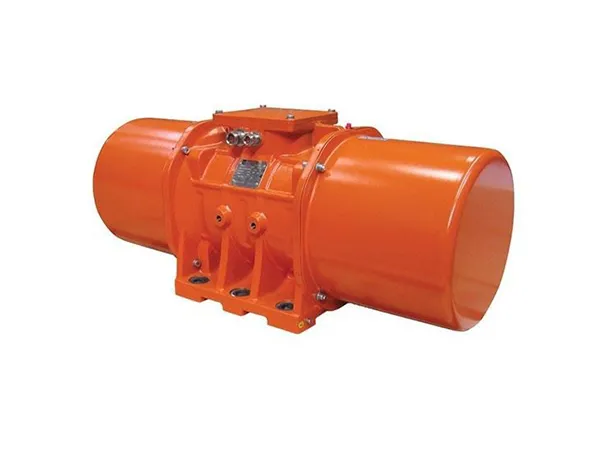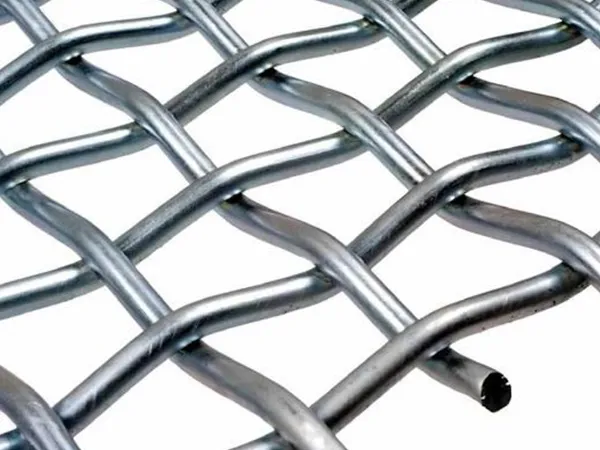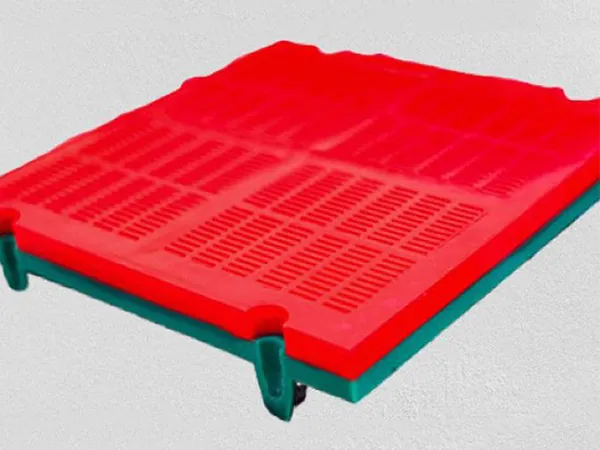
Integrated vibratory motors are compact units designed to generate vibrations in vibrating equipment, such as screens, feeders, conveyors, and compactors. These motors are directly built into the equipment, eliminating the need for external drive mechanisms like belts, pulleys, or shafts.
Structure Principle:
The vibration motor is to install a set of adjustable eccentric blocks at both ends of the rotor shaft, and use the centrifugal force generated by the high-speed rotation of the shaft and the eccentric blocks to obtain the exciting force.
The vibration motor is an excitation source that combines the power source and the vibration source. A set of adjustable eccentric blocks are installed at each end of the rotor shaft, and the excitation force is obtained by the centrifugal force generated by the high-speed rotation of the shaft and the eccentric block. The vibration motor has high utilization rate of exciting force, low energy consumption, low noise and long life. The exciting force of the vibration motor can be adjusted steplessly and is easy to use.
It can be applied to general vibration machinery, such as: vibration crusher, vibration screening machine, vibration baler, vibration shakeout machine, vibration molding machine, vibration pile driver, vibration lift Machines, vibrating filling machines, vibrating arch breaking and anti-blocking devices for silos, etc. Widely used in hydropower construction, thermal power generation, construction, building materials, chemical industry, mining, coal, metallurgy, light industry and other industrial sectors.
Features:
Compact Design: Integrated vibratory motors are designed to be compact and space-saving, as they are directly integrated into the vibrating equipment. This design reduces the overall footprint of the equipment and simplifies installation.
Efficient Vibration Generation: The motors are engineered to generate vibrations efficiently, providing the necessary motion to convey, screen, or compact materials. They typically utilize eccentric weights or unbalanced rotors to produce linear or circular vibrations, depending on the application requirements.
High Performance: Integrated vibratory motors are engineered for high performance, delivering consistent and reliable vibration over long periods of operation. They are designed to withstand heavy loads, harsh operating conditions, and continuous use in industrial environments.
Low Maintenance: Integrated vibratory motors require minimal maintenance compared to traditional drive systems. With fewer moving parts and no external components like belts or pulleys, there are fewer points of failure and less maintenance required.
Customization Options: Manufacturers often offer customization options for integrated vibratory motors, allowing customers to tailor the vibration characteristics to their specific application needs. This may include adjusting the frequency, amplitude, or direction of vibration.
Energy Efficiency: Integrated vibratory motors are typically designed to be energy-efficient, consuming only the power necessary to generate the required vibration. This can result in cost savings and reduced environmental impact compared to traditional drive systems.
Variety of Applications: Integrated vibratory motors are used in a wide range of applications across various industries, including mining, construction, recycling, food processing, and pharmaceuticals. They are versatile and can be adapted to suit different material handling and processing requirements.
Working principle:
1. It is composed of a specially designed motor and an eccentric block. When the motor rotates, the eccentric block generates an exciting force and transmits it to the vibrating machine through the motor.
2. The vibration motor only needs to adjust the eccentric blocks on the outer sides of both ends to form a certain angle with the inner eccentric blocks, and the exciting force can be adjusted steplessly.
Vibration force: Fm=G/g×r×ω2
G: Eccentric block mass
g: gravitational acceleration
r: the distance between the center of mass of the eccentric block and the axis of rotation
ω: Motor rotation angular frequency
Amplitude: S=1.8/(N/100)2×Fm/G
Fm: Exciting force (N) G: Participating weight N: Rotational speed S: Double amplitude (mm)

Flip flop screening panels are polyurethane elastomers that are formed by a casting machine at one time. The structural design of this polyurethane screen shows the characteristics of good abrasion resistance, good elasticity, high elongation at break and resistance to bending of the polyurethane elastomer.
READ MORE
The composite screen mainly solves the problems of low strength and short service life of ordinary woven mesh. It consists of surfing the Internet and supporting the Internet. It has high strength, rigidity and carrying capacity, and can effectively reduce vibration noise and increase the service life of the screen.
READ MORE
The high accelerations caused by the stretching of the screen pads and excessive expansion of the openings of the Trisomat vibrating screen deck result in virtually no clogging of the screen. Our experts will assist you in selecting the best screen materials and fixtures for your feed.
READ MORECopyright © 2023 Xinxiang Zongyuan Machinery Equipment Co., Ltd. | All Rights Reserved.